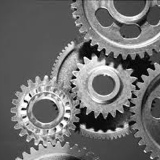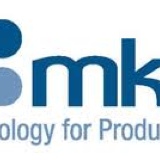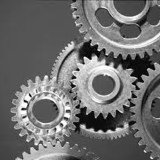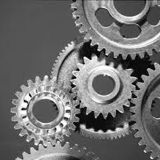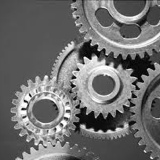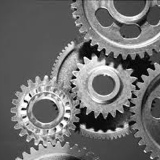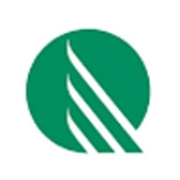Information
-
Document No.
-
Audit Title
-
Client / Site - Toyota Motor Manufacturing Mississippi
-
Conducted on
-
Prepared by
-
Location
-
Personnel
ELECTRICAL
-
All capacitors shall have a method of discharge after being disconnected from their source of supply. (NEC -2002 Art. 460.6 & NFPA 79-2002 #7.10.2)
-
Add media
-
Equipment has the ability to dissipate or block stored energy (OSHA 1910.147)
-
Add media
-
There are no hardwire bypass device (jumpers) connected to any part of any safety device or safety circuit. Any other use of any bypass device (jumper) requires explanation per the NAMCs Jumper Guidelines.<br>
-
Add media
-
E-stop buttons are readily accessible and located at each operators station and other locations where emergency stop is required. (NFPA 79-2002 # 10.7.2.2
.7.4)<br>
-
Add media
-
All switches, buttons and function control knobs shall have an identifying function legend.(NFPA 79-2002 #10.2.3.1)
-
Add media
-
Main disconnecting means is mechanically interlocked with the control panel door, or a tool is required to open the door. ( NFPA 79-2002 #5.3.1.4, # 6.2.3)<br>
-
Add media
-
Maintenance circuits tapped from the "line side" of the main circuit breaker (fuse) shall be Lockout capable, rated for correct short circuit breaker fuse shall be lockout capable, rated for correct short-circuit interrupting capacity of the incoming supply, all contained in their own enclosure ( within the main panel next to the main disconnect or externally mounted adjacent to the main panel) and provided with secondary over current protective devices. (NFPA 79-2002 #16.2.2.2)<br><br>
-
Add media
-
All Safety light curtains shall be hard wired thru safety relays or safety PLCs, not normal relays or normal PLCs
-
Add media
-
All externally fed, ungrounded wiring not switched by the main disconnect must be orange. A label on the panel door must provide a warning.
-
Add media
-
All motors that may be serviced while other motors controlled by the same machine continue to run, shall have a lockable disconnect switch installed in the motor circuit (NEC -2002 Art. 430.102 & OSHA 1910.147)
-
Add media
-
Disconnect switches and the motors / systems that they control are clearly labeled with the same identifying information as drawings. And at least one disconnect switch installed in the motor circuit.
-
Add media
-
All enclosures and terminals boxes which do not clearly show they contain electrical devices shall be marked with a warning label (lightning bolt symbol) on them (NFPA 79-2002 #17.2.6)
-
Add media
-
All electrical enclosures that contain voltages greater than 50 vac or 60 vdc, must require a tool to be opened and have a warning sign stating "remove power before entering" , unless there is a an interlocked disconnect switch provided. ( NFPA 79-2002#17.2.6)
-
Add media
-
All maintenance receptacles must have GFCI protection and if external to the control enclosure they must be covered when not in use. (NFPA 79-2002 #14.4.5.7 & # 16.1.2)
-
Add media
-
Red is used for all ungrounded and white is used for all grounded AC control wires. Blue is used for all ungrounded and white with blue stripes used for all grounded DC control wires. (NFPA 79-2002 # 14.2.3 & # 14.2.4.3)
-
Add media
EQUIPMENT GUARDING
-
All moving parts or equipment that create pinch points or other potential hazards are guarded by photo eye/light curtain, mat switch, physical barrier or other safety device. This device should be adequate in location, size, and function.
-
Add media
-
Light curtain location (determined by risk assessment) should be a minimum height = 1400 mm to top and must prevent T/M's from reaching hazard.
-
Add media
-
The design or location of the guard shall not create a hazard. ( ANSI B11.19-2003)
-
Add media
-
Perimeter safeguarding around the machine must be designed, designated, and installed to prevent accidental or intentional entry. A combination of walls, fences, photo eyes, safety mats, limit switches, etc. may be used to prevent or detect entry into a machine cell as determined by the risk assessment. This should prevent reaching around, under or climbing into a hazard zone.
-
Add media
-
The perimeter fence typically should be six feet high and have an opening at the bottom no greater than eight inches and maximum of 40mm openings. The perimeter fence should also be constructed of a material that provides the best visibility of related machinery. All sharp edges must be eliminated. ((ANSI B11.19-2003 and RIA 15.06-1999)
-
Add media
-
Machine and cell access doors are recommended to be painted yellow.
-
Add media
-
Access gates, doors and windows that provide full body access to the machine/robot cell must be equipped with an electrical circuit interlock/safety switch that when opened will stop equipment motion as determined by the risk assessment.
-
Add media
-
An 18inch (450mm) minimum clearance must be maintained between robot movement, "operating space", and any fixed items such as building columns, structures, utilities or other machines and equipment, if teaching occurs inside of the safeguarded space. (ANSI/RIA R15.06-1999 # 10.7.7)
-
Add media
-
Guards and covers shall require the use of a tool for removal.
-
Add media
-
All machine guarding at fixed locations is securely mounted.
-
Add media
WALKING/WORKING SURFACES
-
All elevated work surfaces or walkways 4-feet or higher from the floor are protected by standard guardrail and 4-inch toe board. (OSHA 1910.23)
-
Add media
-
Stairs should have a standard handrail with a height of 30 to 34-inches and adequate width for expected traffic.
-
Add media
-
All wall openings shall be guarded (OSHA 1910.23(b))
-
Add media
-
Fixed ladders are installed per OSHA Standard 1910.27, and ladder cages are installed on all ladders over 20-feet in height.
-
Add media
LOCK OUT
-
All energy sources must be capable of being locked out to comply with applicable OSHA, ANSI, TEMA, and NAMC lock-out requirements.
-
Add media
-
Blocking device readily available and tested for stored kinetic energy. Blocking device shall be painted red.
-
Add media
-
Bleed-off valves shall be readily available for stored pneumatic or fluid energy and tested. They shall be lockable where required.
-
Add media
ROBOT SAFETY
-
Work envelope drawing reviewed (maximum reach / restricted space)
-
Add media
-
All pendant that are capable of controlling motion with the operator inside of the safeguard space must have an e-stop device on the pendant. (RIA 15.06-1999 #4.6.2). All pendants must have an enable switch (three position for new equipment manufactured after June 2001 (RIA 15.06-1999 #4.7.3 & #10.3.2)
-
Add media
CRANE AND HOIST
-
All cranes have been initially inspected and tested by the OEM/Installer or qualified inspector.<br>
-
Add media
-
Rate load markings are plainly marked on each side of the crane, and where applicable, easily legible from floor level.
-
Add media
-
Hard stops are at or near ends of each rail to which the crane/hoist is attached.
-
Add media
-
Safety cables or other effective means are attached as a secondary method of protection from crane hoist falling.
-
Add media
SAFETY/OPERATIONAL
-
Laser Safety Check<br> a) Does the machine have a laser?<br> b) Have all laser safeguards been implemented?
-
Add media
-
Workspace isn't cluttered, cramped or congested. (OSHA 1910.22)
-
Add media
-
All tripping hazards are eliminated, guarded, or covered.
-
Add media
-
Where required, has the installation ( machine, structural steelwork, process,,lifting fixtures, etc) been reviewed and approved by a "Professional Engineer", licensed by the local authorities.
-
Add media
-
Sufficient/adequate lightning for process lighting and control cabinet? (Foot candles, structure, and layout) ( Meets ANSI/IESNA "Recommended Practices" of 50 foot candles for welding area, 150 foot candles for parts inspection stations, and 200 foot candles for final assembly, measured at 30 inches from the floor). (Ref: ANSI/IESNA RP -7-01, "Recommended Practice for Lighting Industrial Facilities), copyright 2001)
-
Add media
-
General area ventilation is acceptable for work performed.
-
Add media
-
Process specific ventilation systems are completed and function for production trials, or alternate temporary monitoring and systems are in place.
-
Add media
-
Designed-in noise reduction systems are completed and functioning for production trials, or alternate temporary monitoring and systems are in place.
-
Add media
-
Any Confined Spaces have been identified according to plant policy.
-
Add media
ERGONOMICS
-
Principle working height is between 880mm and 1080mm with horizontal reach less than 700mm (measured from the hip) and a maximum vertical reach of 1820mm.
-
Add media
-
All equipment push buttons are recommended to require 1kg or less to operate. (TEMA Ergo Guideline # 49 & # 50, July 2003)
-
Add media
-
There are no sharp edges or points at the t/m operating area that would cause contact stress.
-
Add media
FINAL SAFETY CHECKLIST
-
Manual Operations Check
-
Automatic Operations Check
-
Activating any safety device immediately stops equipment motion. If machine has multiple zones, interlocks in hard wiring end PLC circuits must be confirmed.
OTHER
-
-
Add media
-
-
Add media
-
-
Add media
-
-
Add media
-
-
Add media
-
-
Add media
-
-
Add media
-
-
Add media
-
-
Add media
-
-
Add media
-
-
Add media
PUNCHLIST
-
-
Add media
-
Due date for Countermeasure:
-
-
Add media
-
Due date for Countermeasure:
-
-
Add media
-
Due date for Countermeasure:
-
-
Add media
-
Due date for Countermeasure:
-
-
Add media
-
Due date for Countermeasure:
-
-
Add media
-
Due date for Countermeasure:
-
-
Add media
-
Due date for Countermeasure:
-
-
Add media
-
Due date for Countermeasure:
-
-
Add media
-
Due date for Countermeasure:
-
-
Add media
-
Due date for Countermeasure:
-
-
Add media
-
Due date for Countermeasure:
-
-
Add media
-
Due date for Countermeasure:
-
-
Add media
-
Due date for Countermeasure:
SIGNATURES
-
PE ENGINEER
-
Safety
-
CONTRACTOR
-
PILOT
-
PRODUCTION
-
TEMA ENGINEER
